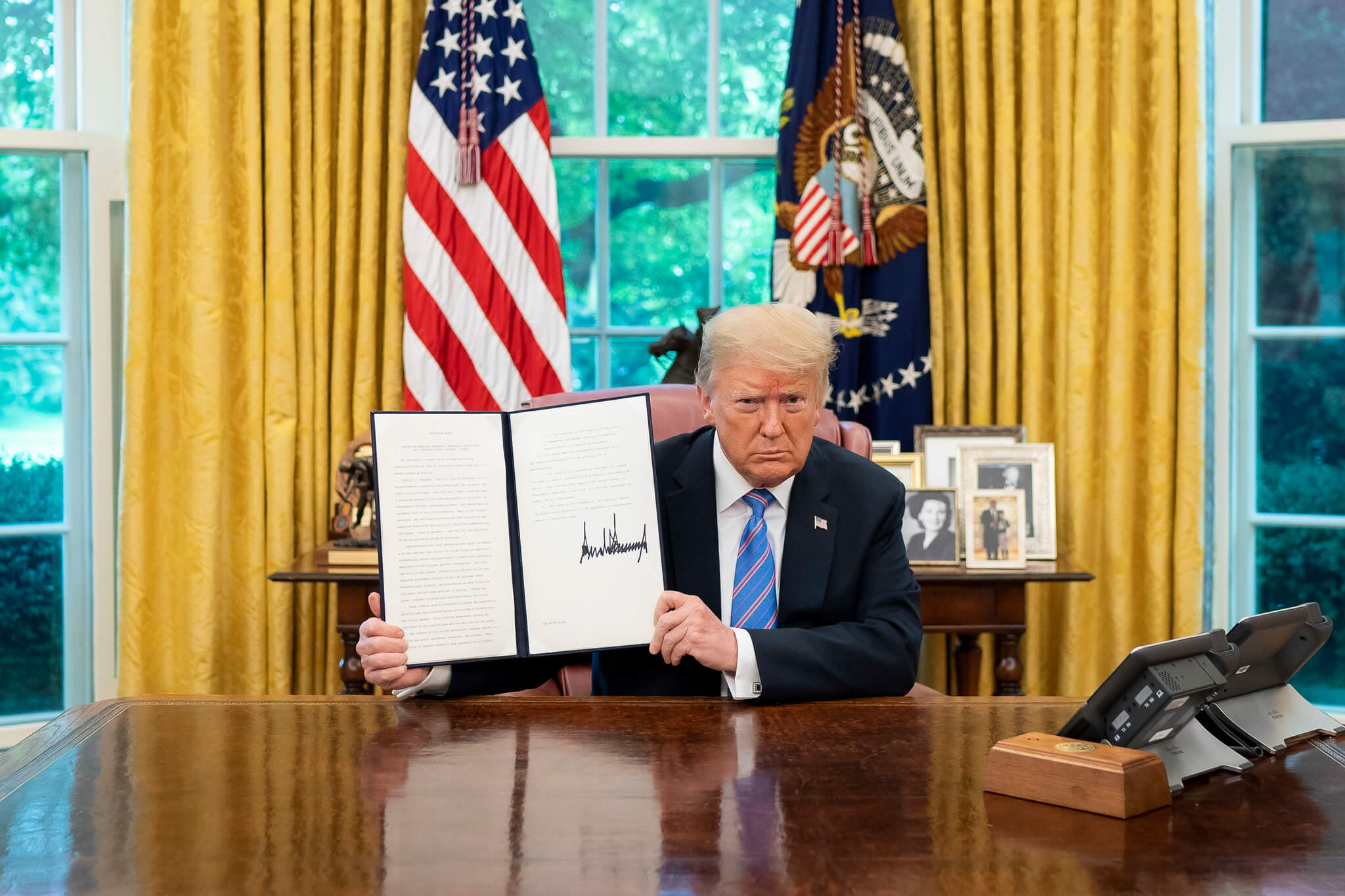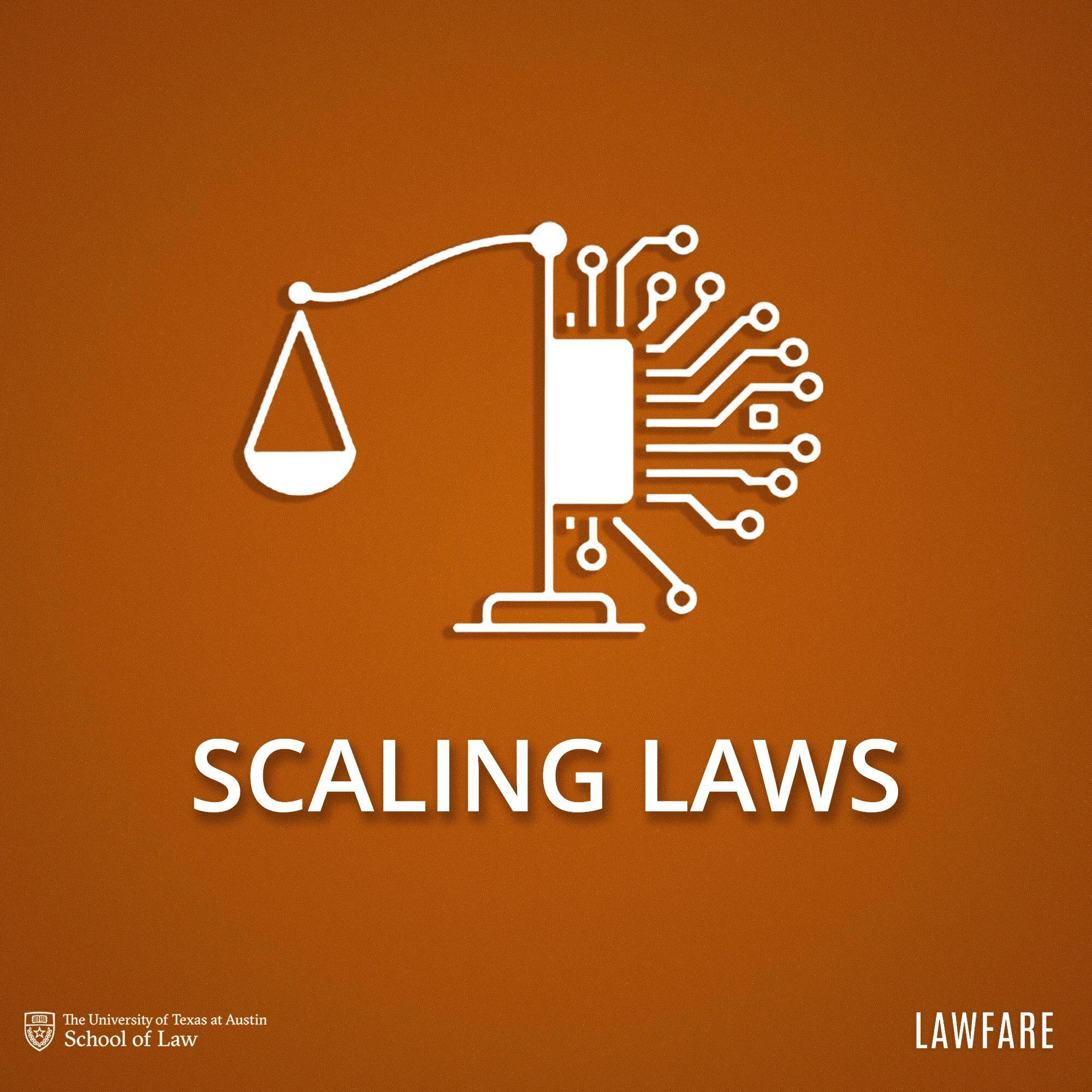Understanding Executive Orders 14148 and 14236

Published by The Lawfare Institute
in Cooperation With

President Trump’s rapid-fire cancellations of his predecessors’ actions—both presidential memoranda and executive orders (EOs)—are unprecedented in modern times. In January and February alone, Trump revoked 91 of President Biden’s executive orders. Sixty-seven of those revocations came in a single EO (EO 14148, “Initial Rescissions of Harmful Executive Orders and Actions”), representing the most extensive set of revocations ever issued in one EO. The revocations are not limited to Biden’s actions. For example, Trump revoked an Obama-era order protecting LGBTQ+ federal contractors, as well as the underlying policy for the order, first established by President Lyndon B. Johnson in 1965.
In March, President Trump introduced another sweeping EO titled “Additional Rescissions of Harmful Executive Orders and Actions” (EO 14236), a follow-up to EO 14148. EO 14236 revokes previous EOs concerning the following: the COVID-19 response, the foreign policy workforce and diversity, equity, and inclusion (DEI), global LGBTQ+ rights, worker wages and unions, the usage of the Defense Production Act (DPA), the Conventional Arms Transfer Policy, tribal self-determination, labor rights and international standards, and labor standards in federal investments. The EO is significant, as it is part of an ongoing trend by the Trump administration to use EOs to dismantle the policies of previous administrations on a large scale. To better understand this trend, it is valuable to examine the contents of EO 14236 and situate them in the context of the administration’s other actions.
“America First” vs. Global Engagement
One pattern among the revocations in EO 14236 is the reversal of internationally focused policies. The Biden administration made efforts to engage with allies on values such as LGBTQ+ rights and worker empowerment, and global challenges such as the human rights consequences of weapons transfers. Trump’s 2025 agenda, by contrast, refocused on sovereignty and bilateral interests. On his first day in office, he signed the “America First Policy Directive to the Secretary of State,” which declared that “the foreign policy of the United States shall champion core American interests and always put America and American citizens first.”
In keeping with this theme, in EO 14236 President Trump revoked the “Presidential Memorandum on Advancing the Human Rights of Lesbian, Gay, Bisexual, Transgender, Queer, and Intersex (LGBTQI+) Persons Around the World” and the “Presidential Memorandum on Advancing Worker Empowerment, Rights, and High Labor Standards Globally.” He also revoked “Presidential Memorandum on Delegation of Authority Under NDAA FY2022 §6501(b)(2),” which empowered the U.S. Agency for International Development to engage with the Coalition for Epidemic Preparedness Innovation to guide global response to pandemics, and NSM-18—the United States Conventional Arms Transfer Policy—which stated that no U.S. arms sale would be approved if it is “more likely than not” that the weapons would be used to commit genocide or serious violations of international humanitarian law.
These moves align with Trump’s earlier actions during his second term, such as withdrawing the United States from the U.N. Human Rights Council and the World Health Organization, and actions during his first term, such as withdrawing from the Trans-Pacific Partnership and the Paris climate agreement.
Climate and Energy vs. Deregulation
Many of the rescinded orders in EO 14236 dealt with climate change, clean energy, and environmental policy. During his tenure, President Biden had incorporated clean energy into national priorities. Examples of Biden’s prioritization of clean energy included rejoining the Paris climate agreement, issuing orders on carbon emissions, and using the DPA to support clean energy manufacturing. In EO 14236, President Trump revoked the following:
- PD 2022-15 – “Determination Pursuant to DPA §303 on Solar Photovoltaic Modules,” which used the DPA to boost domestic production of building insulation materials in support of a “clean energy economy.”
- PD 2022-17 – “Determination Pursuant to DPA §303 on Electrolyzers, Fuel Cells, and Platinum Group Metals,” which used the DPA to increase production of hydrogen energy technologies and necessary materials.
- PD 2022-18 – “Determination Pursuant to DPA §303 on Electric Heat Pumps,” which used the DPA to expand U.S. manufacturing of electric heat pumps, which are crucial for building decarbonization.
These revocations follow a larger pattern. Across both his first and second terms, President Trump has taken many steps that signal the administration’s move toward deregulation in issues dealing with climate change. For example, in his first term, he canceled President Obama’s Climate Action Plan and announced an EO that aimed at “avoiding regulatory burdens that unnecessarily encumber energy production, constrain economic growth and prevent job creation.” In his second term, President Trump described climate-driven policies as “extremism” dangerous to the economy and signed EO 14153, “Unleashing Alaska’s Extraordinary Resource Potential,” to enable oil development in areas President Biden had previously protected.
Labor and Workers’ Rights
Several of the rescissions in EO 14236 roll back worker protections. The order revokes the following:
- “Presidential Memorandum – Advancing Worker Empowerment, Rights, and High Labor Standards Globally,” which instructed agencies to integrate labor standards into U.S. foreign policy and trade and investment.
- “EO 14119 – Scaling and Expanding the Use of Registered Apprenticeships in Industries and the Federal Government and Promoting Labor-Management Forums,” which expanded registered apprenticeship programs and reestablished labor-management forums in federal agencies with the goal of allowing unions to “discuss how Federal Government operations can promote satisfactory labor relations and improve the productivity and effectiveness of the Federal Government.”
- “EO 14026 – Increasing the Minimum Wage for Federal Contractors,” which increased the minimum wage for federal contractors to $15/hour.
- “EO 14126 – Investing in America and Investing in American Workers,” which emphasized that when agencies award funding for infrastructure and related projects they should prioritize projects that commit to good labor practices.
As with climate change, Trump’s EO follows an earlier pattern from his first term, during which he issued EOs limiting collective bargaining and dismantling labor-management forums. In Trump’s second administration, among other measures, he canceled EO 14003, “Protecting the Federal Workforce,” thereby reimposing constraints on federal unions he had put into place in 2018, and revoked EO 14119, a Biden-era order aimed at reinstating labor-management forums. Furthermore, on March 27, the Office of Personnel Management issued guidance directing agencies to “abolish labor-management forums, committees, and councils” by April 30. While there is no direct accounting of how many agencies have complied with the guidance, some evidence suggests that changes have been made. The Federal Mediation and Conciliation Service lost 95 percent of its staff to cuts, with only four mediators now left for all federal labor disputes. A U.S. Food and Drug Administration bargaining session related to mass layoffs was canceled. In response, several lawsuits were filed. The American Foreign Service Association obtained a temporary injunction blocking the application of the guidance as related to the State Department and the U.S. Agency for International Development. Another lawsuit, by the National Treasury Employees Union, also succeeded in obtaining a temporary injunction, but that injunction was lifted.
Equity and Civil Rights
Another common thread among the revocations in EO 14236 is its targeting of policies that promote equity for marginalized groups. Trump’s EO, “Initial Rescissions of Harmful Executive Orders and Actions,” on which the current EO builds, had already revoked Biden’s day one equity order (EO 13985) and anti-discrimination order (EO 13988). EO 14148 continues on this theme, revoking “NSM-3 – Revitalizing America’s Foreign Policy and National Security Workforce, Institutions, and Partnerships,” which aimed to increase diversity in the U.S. diplomatic and national security workforce; the “Presidential Memorandum on Advancing the Human Rights of Lesbian, Gay, Bisexual, Transgender, Queer, and Intersex (LGBTQI+) Persons Around the World,” which instructed executive agencies engaged abroad to combat criminalization and discrimination against LGBTQI+ individuals, and to “pursue an end to violence and discrimination” based on sexual orientation or gender identity; and “EO 14112 – Reforming Federal Funding and Support for Tribal Nations to Better Embrace Our Trust Responsibilities and Promote the Next Era of Tribal Self-Determination,” which directed agencies to make it easier to create partnerships between the U.S. government and tribal nations, to ease burdensome grant requirements, and to improve access to federal resources for tribes—all aimed at empowering tribal self-governance.
President Trump pursued this theme in his first term when, among other examples, he banned certain diversity training via EO 13950, called federal diversity training programs “teaching people to hate our country,” labeled New York City’s plan to paint “Black Lives Matter” on Fifth Avenue as a “symbol of hate,” and banned transgender military service.
In his second term, President Trump has taken the anti-equity efforts one step further. Among the notable examples, President Trump issued a separate order on Jan. 20, EO 14151, “Ending Radical and Wasteful Government DEI Programs and Preferencing,” to ensure agencies eliminate diversity training and programs, banning transgender service members from serving in the military again, and even revoking President Johnson’s 1965 EO 11246, which prohibited federal contractors from discriminating against employees based on race, color, religion, sex, or national origin.
Use of Emergency Powers and Industrial Policy
During his presidency, Biden showed a propensity to use extraordinary executive tools (such as the DPA, a U.S. law granting the president power to influence private domestic companies’ operations for national security purposes, often used in cases of war, natural disaster, or counterterrorism) for nontraditional purposes such as COVID-19 response, climate tech manufacturing, and a baby formula shortage—even potentially waiving DPA statutes for defense supply chains, creating a federal intervention in supply chains to achieve policy goals. For example, early in his term, President Biden used the DPA to combat the COVID crisis by boosting the production of vaccines, at-home test kits, and personal protective equipment, and he credited the DPA-enabled partnership between Merck and Johnson & Johnson for the rapid increase in vaccine production.
President Trump’s allies have criticized this use of emergency powers. For instance, the America First Policy Institute, tied to Trump, described Biden’s usage of the DPA as “abusing these powers to advance [the administration’s] environmental agenda.” The Heritage Foundation charged that President Biden “authorized the inappropriate use of the Defense Production Act—an egregious misuse of executive power.”
Accordingly, EO 14148 revoked several of Biden’s actions that utilized emergency powers in nontraditional ways, including the following:
- “Presidential Memorandum on Finding of a Severe Energy Supply Interruption,” which formally declared that a severe oil supply emergency existed due to global disruptions, specifically citing Russia’s invasion of Ukraine, and authorized an emergency drawdown of the Strategic Petroleum Reserve.
- “PD 2022-13 – Delegating Authority Under the DPA to Ensure an Adequate Supply of Infant Formula,” which invoked the DPA to address the nationwide infant formula shortage.
- “PD 2022-15 – Determination Pursuant to DPA §303 on Solar Photovoltaic Modules,” which used the DPA to protect U.S. manufacturing of solar panels and components.
- “PD 2022-15 – Determination Pursuant to DPA §303 on Solar Photovoltaic Modules,” which used the DPA to boost domestic production of building insulation materials in support of a “clean energy economy.”
- “PD 2022-17 – Determination Pursuant to DPA §303 on Electrolyzers, Fuel Cells, and Platinum Group Metals,” which used the DPA to increase production of hydrogen energy technologies and necessary materials.
- “PD 2022-18 – Determination Pursuant to DPA §303 on Electric Heat Pumps,” which used the DPA to expand U.S. manufacturing of electric heat pumps, which are crucial for building decarbonization.
- “Presidential Memorandum – Presidential Waiver of Statutory Requirements Pursuant to DPA §303 on DoD Supply Chains Resilience,” which waived certain procedural requirements that normally apply to DPA actions (such as pricing constraints on materials, delivery-date limits on imported agricultural commodities, and mandatory congressional notice), in order to more rapidly strengthen critical Department of Defense supply chains.
By revoking these actions, Trump may be signaling a move to reserve emergency powers for issues his allies and supporters are more likely to define as “national security issues,” and letting the private sector handle supply issues in other cases. His revocations of emergency acts have been called a “welcome course correction” by the conservative group Americans for Prosperity Foundation.
This is not to say that President Trump himself has shied away from using emergency powers. In his first term, President Trump declared a national emergency at the southern border to redirect military funds for a border wall, seen as a controversial move. However, Trump framed the decision in traditional national security terms, citing an “invasion” of “criminals and gangs.” In his second term, he signed an emergency order describing the threat posed by insufficient domestic energy production, and again he declared an emergency at the border. He coupled this with an order invoking the 18th-century wartime law, the Alien Enemies Act, targeting the Venezuelan Tren de Aragua cartel, which allowed the administration to expeditiously apprehend and remove detainees. The application of the law has been quite controversial (with questions arising over a lack of due process for detainees and a lack of a “war,” which is required for triggering the statute), resulting in lawsuits.
Likely, the Trump administration is showing that it is willing to use emergency powers but only for causes it determines to be national security threats.
The Future of Executive Orders
President Trump has relied on executive orders as a means of making and effectuating policy, a trend that seems to have grown stronger in his second term. As of this writing, Trump has signed 161 executive orders in 2025 alone. And the orders are changing in character—Trump’s first term did not feature such a single mass repeal order like EO 14148. Although he reversed many Obama-era policies, it was often done through various separate actions. The concentrated, list-style repeals seen in these orders have little precedent and may reflect a broader trend of EOs becoming more partisan, seen as easy tools for presidents to undo their predecessors’ actions. Note that previously the Biden administration had set a record in 2021, by revoking 42 of Trump’s EOs in its first 100 days. Some commentators have dubbed the trend as “unilateral pingpong” between administrations. Should power keep changing hands between parties, it is likely that Trump—and future presidents—will take more unilateral executive actions, including EOs, that will eventually become the new norm.



-(1).jpg?sfvrsn=b91ff6a6_7)
